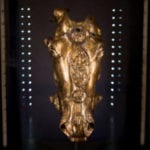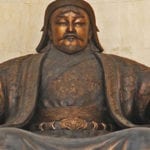 Weird Stuff
Weird Stuff  Weird Stuff
Weird Stuff  Our World
Our World 10 Ways Your Christmas Tree Is More Lit Than You Think
 Movies and TV
Movies and TV The 10 Coolest Stars to Set Sail on The Love Boat
 History
History 10 Things You Didn’t Know About the American National Anthem
 Technology
Technology Top 10 Everyday Tech Buzzwords That Hide a Darker Past
 Humans
Humans 10 Everyday Human Behaviors That Are Actually Survival Instincts
 Animals
Animals 10 Animals That Humiliated and Harmed Historical Leaders
 History
History 10 Most Influential Protests in Modern History
 Creepy
Creepy 10 More Representations of Death from Myth, Legend, and Folktale
 Technology
Technology 10 Scientific Breakthroughs of 2025 That’ll Change Everything
 Weird Stuff
Weird Stuff Ten Bizarre Facts About The Doge Meme
 Our World
Our World 10 Ways Your Christmas Tree Is More Lit Than You Think
 Movies and TV
Movies and TV The 10 Coolest Stars to Set Sail on The Love Boat
Who's Behind Listverse?

Jamie Frater
Head Editor
Jamie founded Listverse due to an insatiable desire to share fascinating, obscure, and bizarre facts. He has been a guest speaker on numerous national radio and television stations and is a five time published author.
More About Us History
History 10 Things You Didn’t Know About the American National Anthem
 Technology
Technology Top 10 Everyday Tech Buzzwords That Hide a Darker Past
 Humans
Humans 10 Everyday Human Behaviors That Are Actually Survival Instincts
 Animals
Animals 10 Animals That Humiliated and Harmed Historical Leaders
 History
History 10 Most Influential Protests in Modern History
 Creepy
Creepy 10 More Representations of Death from Myth, Legend, and Folktale
 Technology
Technology 10 Scientific Breakthroughs of 2025 That’ll Change Everything
10 Surprising Stories About Winston Churchill
Winston Churchill is probably the most popular British prime minister ever. Having served his country as a soldier and politician, he is often considered the among the greatest of Britons. But while his heroic stand against the Nazis is well known, there are still a few facts about the popular politician that might surprise you.
10His Cigars
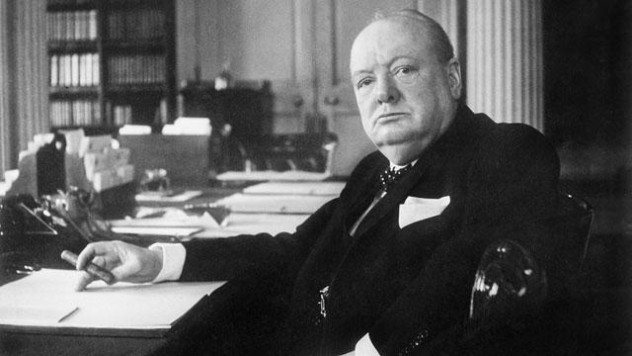
The classic image of Winston Churchill includes a giant cigar stuck between his lips. Churchill developed his love of cigars as a young man, when he traveled to Cuba to report on an ongoing rebellion against the colonial Spanish government. For the rest of his life, he smoked eight or nine cigars every day. However, he almost never took a puff, preferring to chew on the end until it went out, then relight it and start again. To prevent the cigar from becoming soggy, Churchill invented the “bellybando,” a strip of brown paper which could be glued around the end.
At any given time, Churchill had 3,000 to 4,000 cigars in his house, mostly his favorite Romeo y Julieta brand. The cigars were kept in boxes labeled “large” or “small” and “wrapped” or “naked.” They were mostly gifts, which helped keep expenses down. (One of his servants observed that “in two days his cigar consumption was the equivalent of my weekly salary.”) On one occasion, the president of Cuba presented Churchill with 2,400 top-quality cigars, although his paranoid security team insisted that one cigar from each box be sent off and tested for poison. Perhaps the story that best illustrates his love of cigars occurred during World War II, when he had a special oxygen mask designed so that he could still smoke his cigar on an unpressurized, high-altitude flight.
9His Daring South African Escape
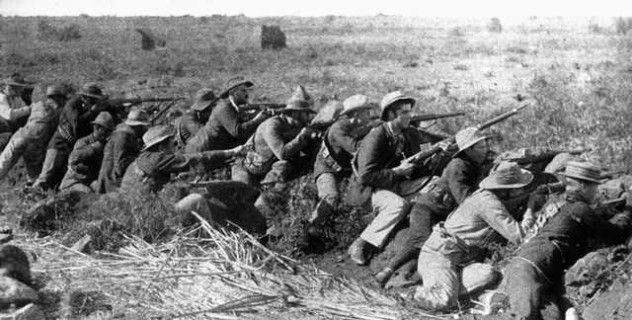
In 1899, Churchill traveled to South Africa to cover the ongoing Boer War for the Morning Post. While there, he was offered a chance to accompany an expedition on an improvised armored train. Although correspondents for the Times and the Manchester Guardian declined the invitation, describing the train as a “death trap,” Churchill was all too eager to go along. That turned out to be a mistake.
As the train was returning to the British lines, it was ambushed by a Boer commando (similar to the one pictured above), which opened fire from a nearby hill. As the British returned fire, the train driver steamed ahead at full speed—and ran right into the rocks the Boers had placed on the tracks, causing one of the cars to derail on a curve. One British crew member managed to escape and make it back to safety, but Churchill and the other survivors were taken prisoner.
The captured men were taken to a school the Boers had converted into a prison camp. Churchill remained there until 1900, when he jumped a fence while the guards were distracted. Two captured officers were supposed to follow, but the guards returned and they were unable to join him. When it became obvious that the two officers were not coming, Churchill made his way through Pretoria and managed to sneak on board a cargo train. Forced to jump off by thirst, he then walked through the bush until he came across a cottage owned by a British mining engineer, who agreed to hide him at the bottom of a mine shaft. He also told him that the Boers had placed a £25 bounty on his head. With the help of the engineer, Churchill was able to board a train to Portuguese East Africa, escaping South Africa for good.
8The Two Winstons
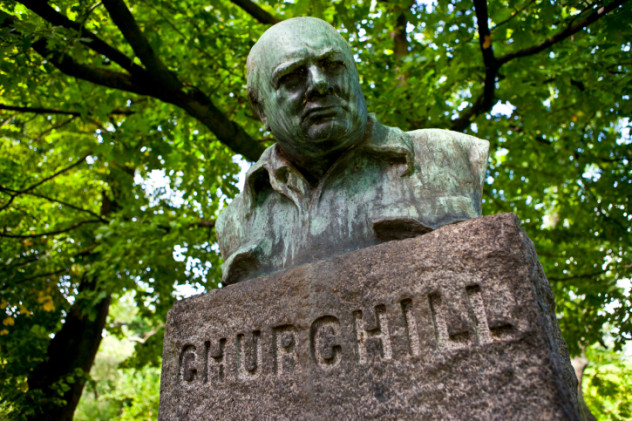
Although it’s somewhat overshadowed by his political career, Winston Churchill was an accomplished writer. In fact, he won the Nobel Prize for Literature in 1953. His first book was The Story Of The Malakand Field Force, a first-hand account of a military campaign in what is now Pakistan.
Funnily enough, there was another writer named Winston Churchill who was active at the same time. This Winston Churchill was an American who wrote a number of novels, six or seven of which became huge bestsellers. These included Richard Carvel, described as “a serious historical novel, embracing a romantic courtship and many events on land and sea,” which sold an astonishing two million copies and made the author a rich man.
Interestingly, both Churchills published their first books in 1898, although the American Churchill was the first to become famous for his writing. Unsurprisingly, he would eventually be eclipsed by the fame of his British counterpart and is almost forgotten today. But at the time, the two writers were often confused with each other. To avoid further difficulty, the two Churchills eventually agreed that the British Churchill would publish as “Winston S. Churchill” while the American would simply go by “Winston Churchill.”
7The Accident That Almost Killed Him
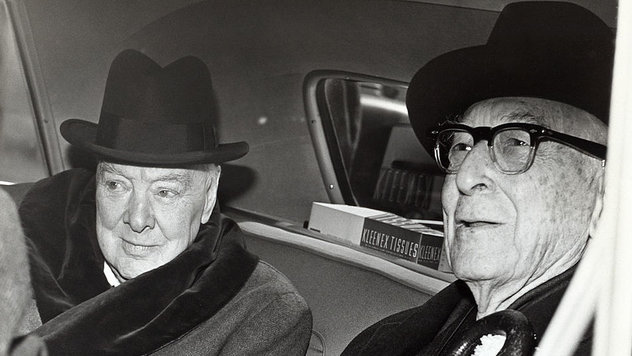
In December 1931, Churchill was on a late-night visit to his friend Bernard Baruch (pictured with Churchill) in New York when he had a brush with death. While crossing the street, he was hit by a car, which then dragged him behind it for a short distance. As it turned out, Churchill had instinctively looked to the right when he wanted to cross. However, since cars drive on opposite sides of the road in America and Britain, he should actually have looked left. Instead, he stepped serenely into the path of an oncoming car.
Churchill sustained severe bruising on his chest and a sprained shoulder. He played down the severity of the injuries, writing that he couldn’t understand “why I was not broken like an eggshell or squashed like a gooseberry.” He also accepted all the blame for the accident, informing the police that the driver was innocent and securing his release. Since the accident occurred during Prohibition, Churchill managed to talk his doctor into writing him a note asserting that “the post-accident concussion of Hon. Winston S. Churchill necessitates the use of alcoholic spirits, especially at meal times.”
6His Interest In Islam

Churchill was so fascinated by Islam that his family thought he might convert. His interest was revealed by the discovery of a 1907 letter written by Lady Gwendoline Bertie, who was engaged to his brother at the time. The letter was written as Churchill was about to leave on a tour of North Africa and Lady Gwendoline warned that “if you come into contact with Islam your conversion might be effected with greater ease than you might have supposed.”
In reality, Lady Gwendoline probably didn’t need to worry, since Churchill was basically an atheist by that point and never seriously considered converting to Islam. However, he did have an interest in Islamic culture and he and his friend Wilfrid Brunt often dressed in Arab clothing in private. During World War II, Churchill managed to find £100,000 to build the London Central Mosque, which he hoped would attract Muslim support for the war. He was also against the way Frederick Lugard treated Muslim tribes in northern Nigeria, then a British colony. Nevertheless, Churchill still criticized Islam in his book The River War, which bemoaned the treatment of women in the Sudan.
5His White House Birthday Suit
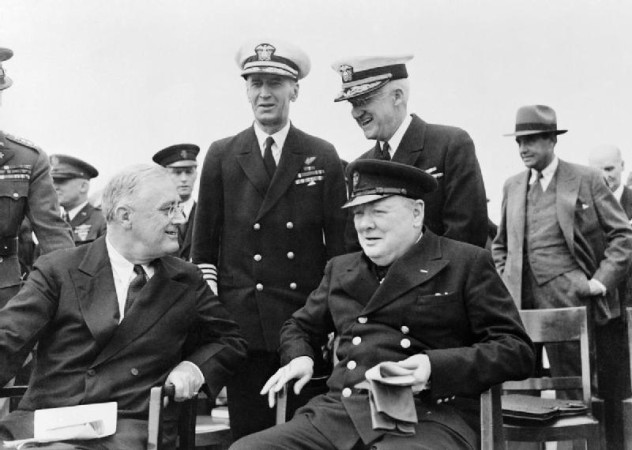
Churchill apparently had several naked incidents while staying in the White House. On one occasion, he supposedly encountered the ghost of Abraham Lincoln while naked. They stared at each other for some time before Lincoln politely disappeared.
President Franklin Roosevelt also saw him naked, along with several White House staff during his 24-day visit in 1941. Churchill had just taken his bath and was pacing around in the nude when Roosevelt came in. The president quickly tried to leave, but Churchill told him not to, declaring that he clearly had nothing to hide from his closest ally.
This incident is somewhat controversial, since Churchill later insisted that he “never received the president without at least a bath towel” to cover himself. However, Churchill’s stenographer and bodyguard both claimed to have witnessed the incident and Roosevelt’s secretary said the president told her about it later, describing Churchill as “pink and white all over.” And Churchill himself once told King George VI that he was the only person on Earth to ever meet with a president naked.
4The Siege Of Sydney Street
On December 16, 1910, nine unarmed policemen were sent to investigate a reported burglary attempt in Houndsditch, London. When they arrived, the criminals, later identified as anarchist refugees from Latvia, opened fire, killing three policemen and injuring two others in the worst police shooting in London history. It’s been noted that the killings reflected something of a culture clash—the Latvians were familiar with the armed and brutally violent Russian police, while the baton-wielding British bobbies were completely taken by surprise and unable to defend themselves. During the melee, one of the gang members was accidentally shot by his friends and died a few days later. A massive manhunt was quickly launched for the two surviving shooters.
On New Year’s Day, the police received a tipoff that the murderers were hiding in a house on Sidney Street. The police cordoned off the area and Churchill, who was the minister responsible for policing at the time, arrived and took command of the operation. Reinforced by the military, the police engaged the criminals in a lengthy gun battle, during which the Latvians fired more than 400 rounds and a bullet tore through Churchill’s hat. The situation was only resolved when the building caught fire and Churchill ordered the fire department not to risk attempting to put it out. One of the men inside was shot when he leaned out to escape the flames, while the other burned to death. There has since been a degree of controversy over whether the two men were actually the same Latvians who shot the policemen, although historians have noted that starting a massive, suicidal gunfight implies some level of guilt.
Churchill seems to have enjoyed the grisly experience, telling a colleague that the siege was “such fun!” Some papers criticized him for using the battle as a “photo opportunity,” noting that it was inappropriate for a politician to directly take command of a police operation. However, the incident seems to have helped cement his reputation as a man of action and improved his popularity with the general public.
3Churchill’s Sneeze
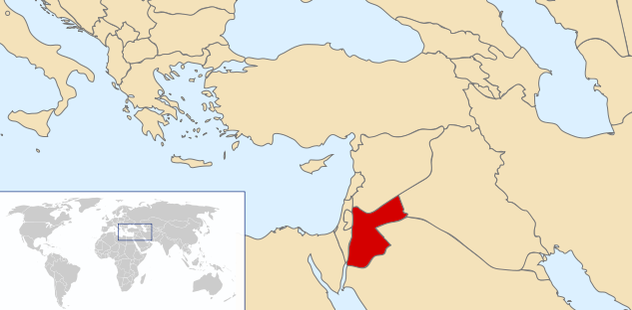
The border between Jordan and Saudi Arabia includes a sharp zigzag known as Churchill’s Hiccup or Churchill’s Sneeze. The story goes that Churchill was drawing the map when a sudden hiccup or sneeze caused his hand to slip, making a sharp indent into Jordan. It’s a pretty ridiculous story and unsurprisingly it isn’t true. Instead, the zigzag shape was actually deliberately designed to give Britain an uninterrupted air corridor between Jordan and Iraq.
If there’s an element of truth to the story it’s that Churchill, as minister for the colonies, did play a significant role in establishing the borders of the modern Middle East. This occurred in the wake of the controversial 1916 Sykes-Picot Agreement, in which Britain and France agreed to divide the Middle East between them, ignoring ethnic and religious boundaries in the process. They were so unsure about what to do with Palestine that they actually considered just giving it to Belgium. Meanwhile, France ceded a chunk of Syria to Turkey against the wishes of most of the locals, simply because the wealthy Turkish minority in the area was better at lobbying than the impoverished Arabs.
Britain and France also initially agreed to support the creation of a Kurdish state, but then dumped the idea when it became clear they would have to give up large chunks of Iraq and Syria to make it happen. Today, 25 million Kurds remain without a state they can call their own. The agreement is now even used as a recruitment tool by ISIS, which claims that the boundaries were unjust.
2His Black Dog

Throughout his life, Churchill probably suffered from manic depression, which he called his “black dog.” At times, his depression was so severe that he didn’t like standing close to a passing train or looking at the ocean from a ship because he feared he would be tempted to commit suicide. His close friend Lord Beaverbrook once said that he was always either “at the top of the wheel of confidence or at the bottom of an intense depression.”
During his bouts of depression, Churchill would almost cease to function, spending a great deal of time in bed and losing his appetite and ability to concentrate. When he recovered from one such bout, he memorably described how “all the colors come back into the picture.”
When not depressed, Churchill was famously full of energy, usually working and talking until the early hours of the morning. He bounced constantly from one topic to another, causing Roosevelt to quip that he “has a thousand ideas a day, four of which are good.” In fairness, Roosevelt knew Churchill best during the later years of the war, when his doctor had taken to prescribing him amphetamines in order to avoid any depressive episodes, which didn’t help his manic tendencies.
1His Quotes
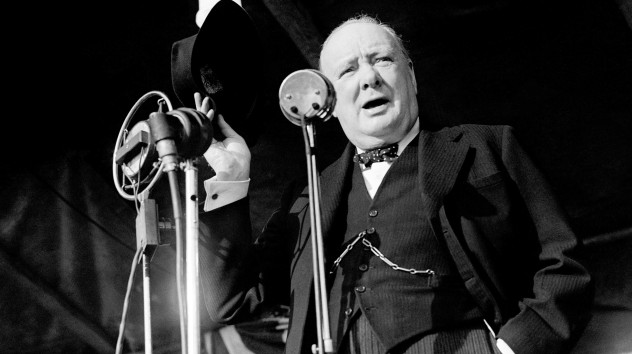
The great quotes of Winston Churchill have filled entire books. Unfortunately, many of the quotes attributed to him just aren’t true. For instance, Nancy Astor is often said to have told him “If I were your wife I would put poison in your coffee,” to which Churchill replied “If I were married to you, I’d drink it.” The incident did happen, but Churchill wasn’t involved at all. Instead, his good friend Lord Birkenhead delivered the reply.
Churchill did have a run-in with Astor, herself a great wit and the first female British Member of Parliament, but it was rather less quotable. Apparently, Churchill complained that he “felt when you entered the House of Commons that a woman had entered my bathroom and I had nothing to protect myself with but the sponge” to which Astor replied “Would it never occur to you that your appalling appearance might have been protection enough?”
Churchill couldn’t really complain about Astor’s rudeness, since he genuinely did respond to another female MP accusing him of being drunk with “Madam, you are ugly and I will be sober in the morning.” However, he probably didn’t say that “Americans will always do the right thing, after they have tried everything else” or tell a civil servant bemoaning prepositions at the end of sentences that “this is the kind of English up with which I will not put.” And both Churchill and George Bernard Shaw denied the famous story in which Shaw sent Churchill two tickets to his new play and invited him to “bring a friend, if you have one” only for Churchill to reply that he would come on the second night “if there is one.”
However, Churchill fans shouldn’t despair just yet. It most likely is true that Churchill was in the toilet when an aide informed him that the Lord Privy Seal had arrived to see him, prompting the memorable instruction to “tell the Lord Privy Seal that I am sealed in the privy and can only deal with one s–t at a time.”
Elizabeth is an aspiring writer. You can like her Facebook page and follow her on Twitter where she’ll be dropping several mind-blowing super-interesting facts every day. Thank you.


